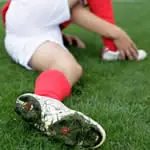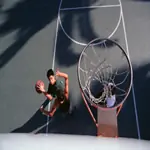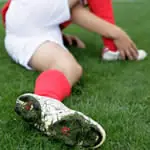Be perceptive on defense. Get to know your opponent. For example, does your opponent telegraph play options?
Telegraphing occurs when players provide a cue or signal of what they intend to do. If you can read these cues, you will have a forewarning of which play options they intend to execute. As a result, you will have time to make the appropriate defensive adjustment.
What is the stance of players? How do they stand and where do they hold the ball, just before they shoot, drive, or pass? If the stance is different for each play option, you can, as they change their stance, adjust your defensive position.
For example, some players, when they intend to drive, assume a crouching position, bringing the ball down below knee level. As they do this, you can drop-off to protect against the drive. As they straighten up, you can move closer, ready to protect against the quick shot.
Do players telegraph their passes? If their arms begin to move the moment they decide to pass, they are telegraphing. As a result, as soon as a player's arms begin to move, your teammate guarding the receiver can start to move into the passing lane to intercept the pass.







Discuss This Article